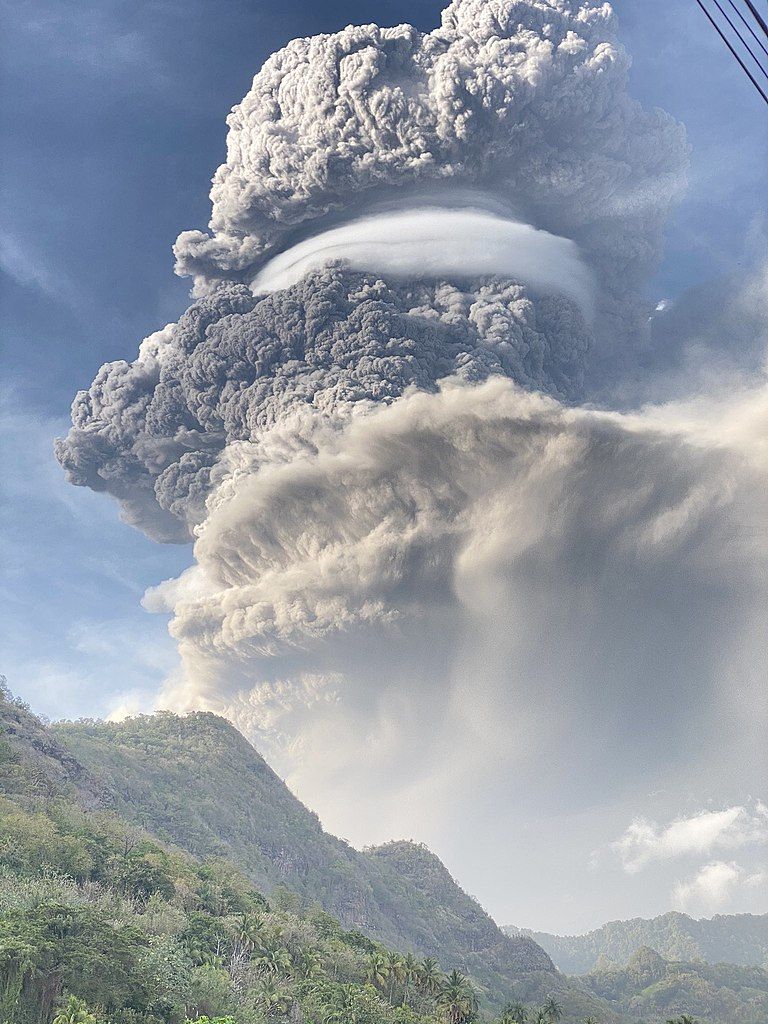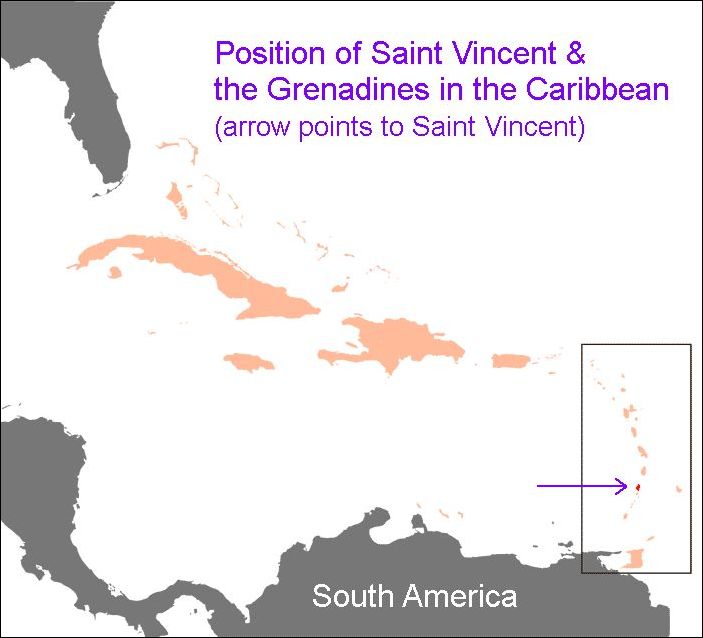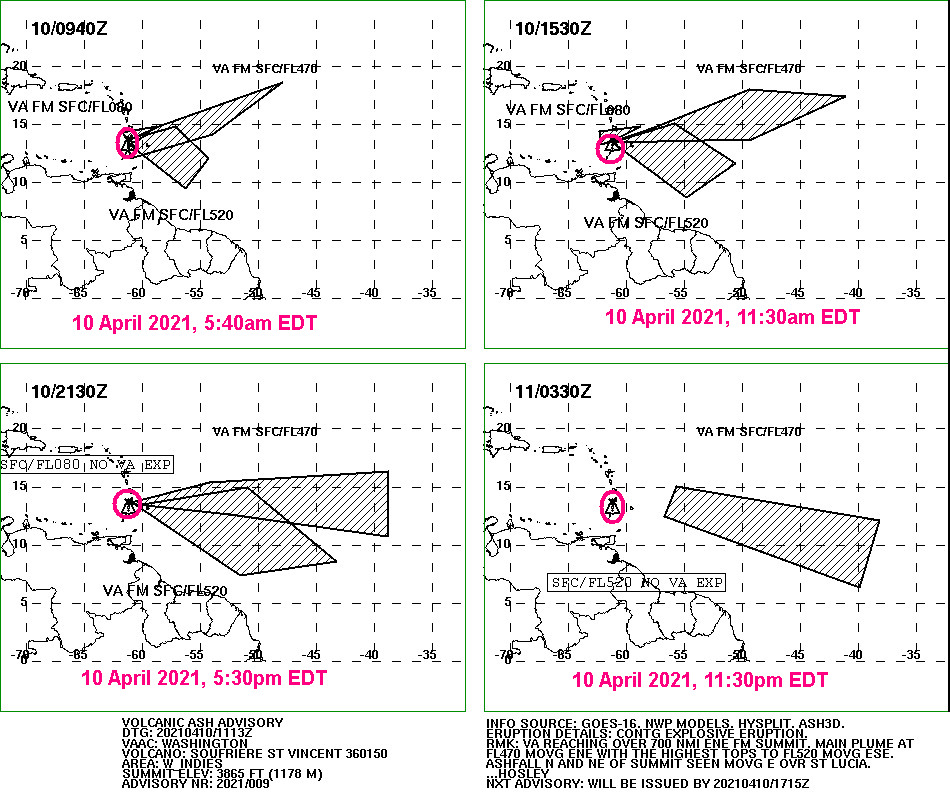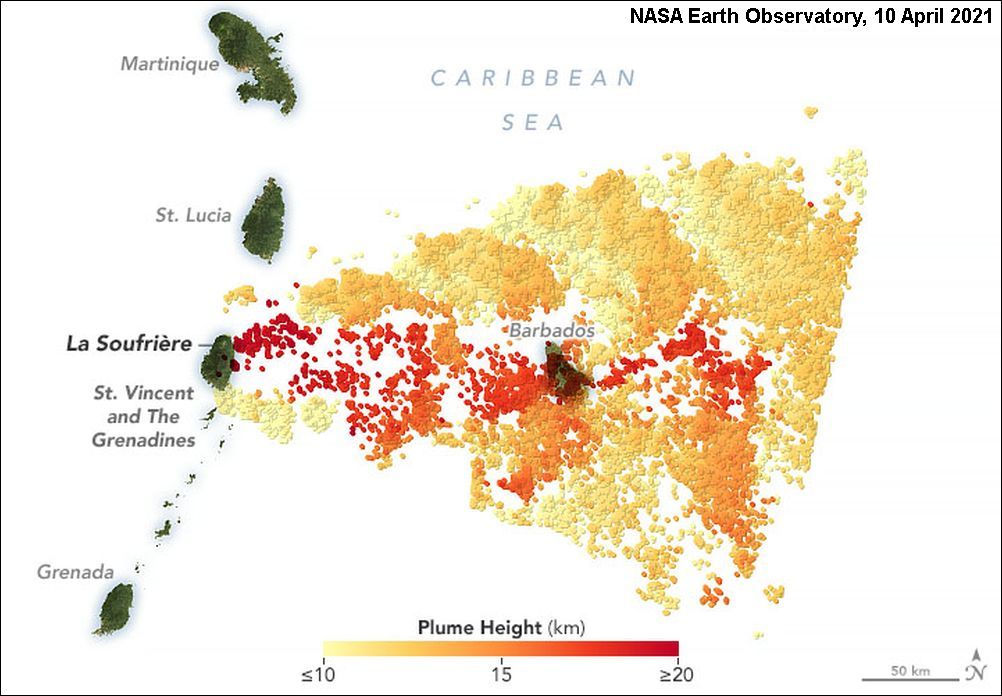
21 April 2021
Twelve days ago Saint Vincent’s La Soufrière volcano began erupting after four decades of silence. Since 9 April it has blanketed the island with thick ash, forced the evacuation of 20,000 people, and ruined fresh water, homes, and farms. It has also caused a deep humanitarian crisis (see 5-minute British Channel 4 video at bottom) and killed untold numbers of local plants, animals and birds.

The volcanic plume is also devastating the air, bad to breathe and dangerous for anything that flies. Saint Vincent’s airport closed when the eruption began while NOAA’s Volcanic Ash Advisory Center provides maps of Caribbean no-fly zones for pilots. The 10 April zones match the plume graph from NASA.


Though the disaster feels far from Pennsylvania it may affect our migratory birds that have not yet crossed the Caribbean from South America. Will the birds smell the plume and find a way to avoid it?
Airplanes will soon be cleared for take-off at Saint Vincents airport. I wonder if the birds will be, too.
This 8-minute video from Britain’s Channel 4 shows the devastation at Saint Vincents.
p.s. Click here for a video of satellite imagery showing the atmospheric effect of La Soufrière volcano.
(images from Wikimedia Commons, NOAA and NASA Earth Observatory)
” Will the birds “smell” the plume and find a way to avoid it? ”
Kate, last week I saw an eagle do just that. Last week there was a significant fire on Neville Island that produced a large plume of smoke that went thick across the river and rose hundreds of feet into the air. An eagle flying towards it along the river decided nope and made a U-turn and headed back towards downtown Pittsburgh.
Fascinating.